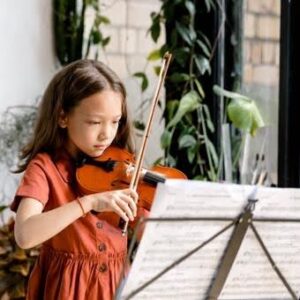Editor’s Note: To learn more about the changes in Michigan’s educator evaluation laws, check out Ed’s previous MAEIA blog post, Changes to Michigan’s Educator Evaluation Laws and the Role of MAEIA Assessments.
___________________________________________________________________________________________________________
 In November 2024, Michigan’s legislature adopted several key changes to the state’s educator evaluation laws allowing teachers more “say” in how they will be evaluated. This newly provided opportunity opens the door for educators to reconsider the fundamental nature of educator evaluation. These changes place an opportunity before educators to consider whether to “go big” or “just tinker” with the measures used for evaluation.
In November 2024, Michigan’s legislature adopted several key changes to the state’s educator evaluation laws allowing teachers more “say” in how they will be evaluated. This newly provided opportunity opens the door for educators to reconsider the fundamental nature of educator evaluation. These changes place an opportunity before educators to consider whether to “go big” or “just tinker” with the measures used for evaluation.
As noted in the document, Using MAEIA Assessments to Demonstrate Educator Effectiveness,
examining revisions to the evaluation practice opens up possibilities to a very different approach to educator evaluation. This document describes two basic approaches: the inspection model and the demonstration model.
The Inspection Model
Currently, the inspection model is in widespread use in Michigan (and elsewhere). In this model, evaluative administrators review student test data and observe teachers practices around nationally available observation protocols (or one developed locally), and using a combination of this information, determine the effectiveness of each teacher. Drawbacks of this model are that state assessment data, such as MI-STEP, is available for only a small percentage of teachers and these state assessments do no assess students in the arts; and commercially available assessments may not be aligned to the learning targets for arts teachers.
Such a system also lacks the opportunity for the arts teachers to add information about the unique outcomes that might affect their competency determinations. Outcomes such as how well the band, choir or orchestra did at festivals, the qualities of theatrical productions, or individual student growth in their understanding of the arts are not typically reported nor used in educator evaluation, although they are important arts education outcomes.
The Demonstration Model
In contrast to the inspection model, the demonstration model provides an opportunity for each educator to “tell their story of their effectiveness.” In this model, educators select one or more school-level continuous improvement outcomes for demonstrating their effectiveness, thus assuring that arts educators are contributing to the overall school improvement activities. Then, in addition, they select one or more personal goals for themselves. This assures that each teacher also focuses on how they can improve their effectiveness in providing learning opportunities to students that serve to help them increase their achievement in the arts. For example, let’s say the school has a school wide writing goal. The arts educator could explain how writing is used in the creative process such as in artist statements, student and peer reflections, or arts-based relevant tasks such as program notes, a sample grant application, or a profile on a contemporary artist in their discipline.
 In the demonstration model, the teacher chooses a performance assessment and select student responses to exemplify the range of student achievement on that assessment in their classroom. The MAEIA catalog of 360 performance assessments in Dance, Music, Theatre, and Visual Arts support this model well. These might report on students who struggled initially but who now have achieved at high levels; students once unable to perform at all but now are doing so; students who did quite well in the past who are now achieving at the same or even higher levels. Combined with teacher documentation of the steps they took to instruct, support, and encourage students (e.g., individual or full class assistance provided), this data can inform evaluating administrator about how well students have achieved and the steps used by the teacher to promote such achievement.
In the demonstration model, the teacher chooses a performance assessment and select student responses to exemplify the range of student achievement on that assessment in their classroom. The MAEIA catalog of 360 performance assessments in Dance, Music, Theatre, and Visual Arts support this model well. These might report on students who struggled initially but who now have achieved at high levels; students once unable to perform at all but now are doing so; students who did quite well in the past who are now achieving at the same or even higher levels. Combined with teacher documentation of the steps they took to instruct, support, and encourage students (e.g., individual or full class assistance provided), this data can inform evaluating administrator about how well students have achieved and the steps used by the teacher to promote such achievement.
 A collection of evidence or instructional artifacts, selected by the educator being evaluated, can be used in a “personal professional practices portfolio,” which is then reviewed by the supervisor and the teacher. Ultimately, each educator tells the story of their own competence. The demonstration of effectiveness in these ways can be especially useful in the arts where there are many different types of student learning activities and many ways that students can demonstrate their achievement, whether individually or in groups.
A collection of evidence or instructional artifacts, selected by the educator being evaluated, can be used in a “personal professional practices portfolio,” which is then reviewed by the supervisor and the teacher. Ultimately, each educator tells the story of their own competence. The demonstration of effectiveness in these ways can be especially useful in the arts where there are many different types of student learning activities and many ways that students can demonstrate their achievement, whether individually or in groups.
 More information about demonstrating educator effectiveness can be found in the resource cited above as well as in this MAC Think Point: Alternative Models for Educator Evaluation (Roeber, 2014). This resource provides more detailed information about each of the educator evaluation models, and for the demonstration model, provides a list of the types of information each teacher may wish to include in their personal professional practices portfolio/collection of evidence. Note that the portfolio or collection of evidence can contain not only the “inspection” types of information (supervisor observations or non-arts achievement data), but evidence supplied by the individual teacher as well, thus providing a much more complete picture of the work and the effectiveness of each arts educator.
More information about demonstrating educator effectiveness can be found in the resource cited above as well as in this MAC Think Point: Alternative Models for Educator Evaluation (Roeber, 2014). This resource provides more detailed information about each of the educator evaluation models, and for the demonstration model, provides a list of the types of information each teacher may wish to include in their personal professional practices portfolio/collection of evidence. Note that the portfolio or collection of evidence can contain not only the “inspection” types of information (supervisor observations or non-arts achievement data), but evidence supplied by the individual teacher as well, thus providing a much more complete picture of the work and the effectiveness of each arts educator.
Changes to Michigan’s educator evaluation requirements can do more than just change the type of assessment information that is collected and used, tinkering a little bit with the evaluation system, but hoping for better results. New requirements for collective bargaining to determine the tools and how they are used creates the opportunity to do far more. It can change from a quite limited “inspection” model to the more inclusive and informative “demonstration” model, with evidence of teacher effectiveness self-reported in personal professional practices portfolios.
 Arts educators should not miss this opportunity to change the fundamental nature of the educator evaluation process to those that support student learning and achievement in the arts and that provide a more complete picture of the work carried out by arts educators to promote student learning. And, spoiler alert: this applies to teachers in any discipline!
Arts educators should not miss this opportunity to change the fundamental nature of the educator evaluation process to those that support student learning and achievement in the arts and that provide a more complete picture of the work carried out by arts educators to promote student learning. And, spoiler alert: this applies to teachers in any discipline!
___________________________________________________________________________________________________________
 ED ROEBER, PH.D., is the assessment director for Michigan Assessment Consortium (MAC) projects. He co-chairs the MAC’s Assessment Resource Development Committee and serves as Board Secretary/Executive Committee.
ED ROEBER, PH.D., is the assessment director for Michigan Assessment Consortium (MAC) projects. He co-chairs the MAC’s Assessment Resource Development Committee and serves as Board Secretary/Executive Committee.
Dr. Roeber has earned degrees in Psychology and Political Science (B.A.) and Educational Psychology/Measurement and Evaluation (A.M. and Ph.D.) from the University of Michigan.
References
Michigan Arts Education Instruction and Assessment. (2016). Using MEAIA Assessments to Demonstrate Educator Effectiveness. Mason, MI: Michigan Assessment Consortium.
Roeber, E. (2014) Alternative Models for Educator Evaluation. Mason, MI: Michigan Assessment Consortium.
Click here for a Printer friendly version of this article.

Leave a Reply
You must be logged in to post a comment. Don't have an account? Register Here.